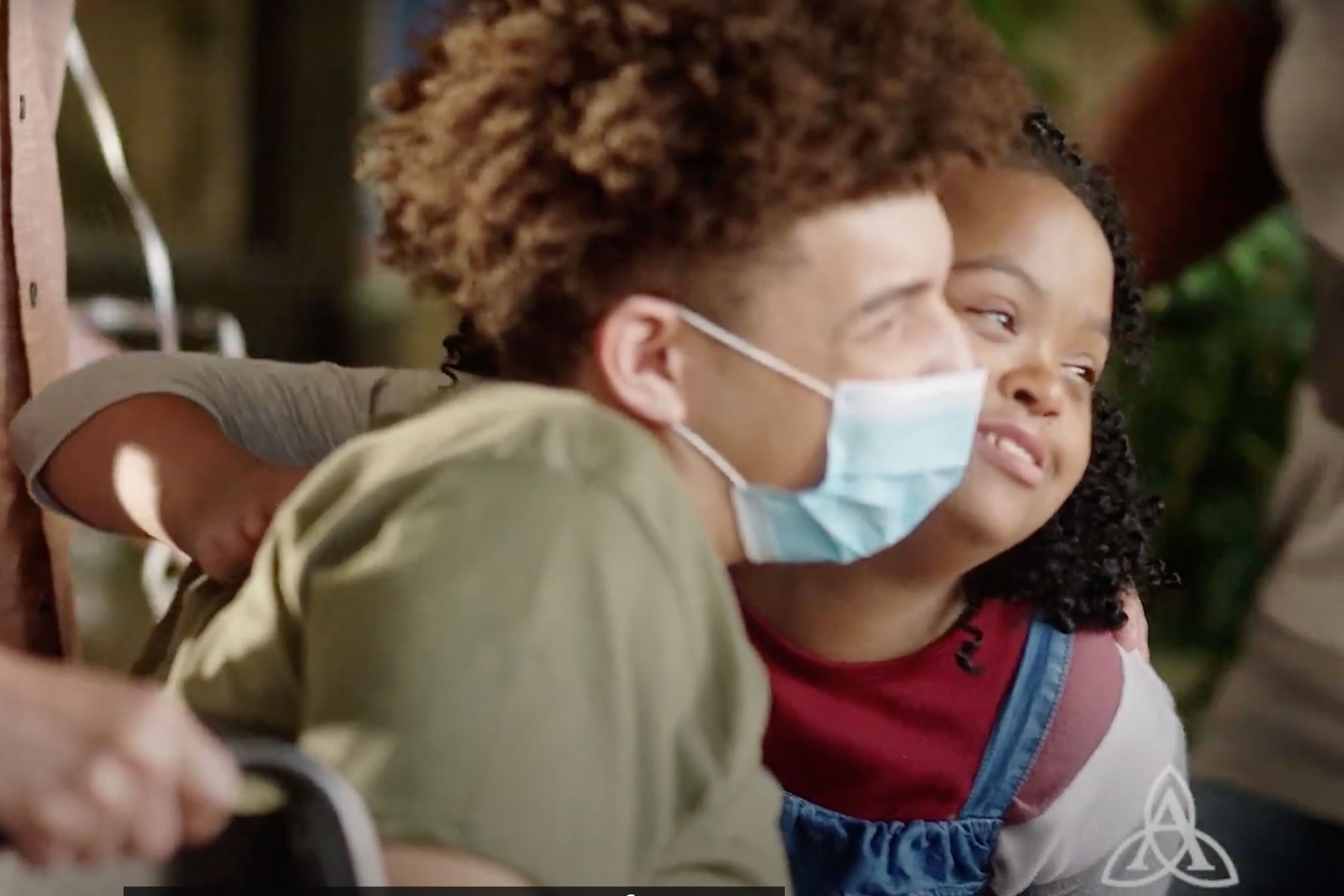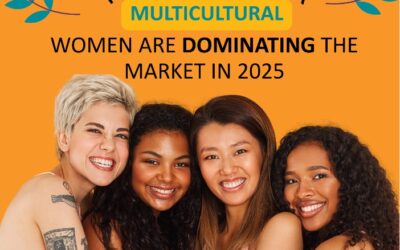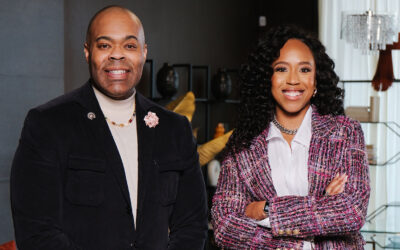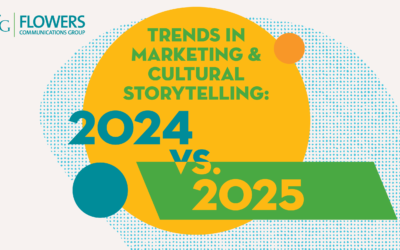Photo Credit: Ascension St. John (video created by Flowers Communications Group’s creative studio, Greenhouse)
The social justice movement of 2020 invigorated brands to issue Diversity, Equity and Inclusion (DE&I) statements, make commitments through signed pledges, and even coin their own DE&I toolkits for others to follow suit. But were companies ready for the challenge and discomfort that came from being held accountable? While vows served as a great starting point to dismantle structural inequities at the corporate and consumer levels, tangible efforts quickly fell through and some even argued tactics as performative as a way to go through the motions of DE&I.
Although several strides were taken towards equitable measures from a racial perspective, for some marginalized groups, little to no acknowledgment was made of the constant inequities they face. Such has been the case for those with disabilities.
According to the Centers for Disease Control and Prevention (CDC), 26% of adults in the United States identify as having some type of disability. Globally, we’re looking at 15% of the population living with a disability according to the World Bank. That’s approximately one billion people.
Disability is part of the human experience. Almost every person at one point will experience a temporary or permanent disability throughout their lifespan, creating an opportunity to ask, “Why aren’t companies implementing strategies and tactics to address the needs of this population when developing a plan, executing an event, or creating a campaign?” It could be a matter of overlooking the population, but it’s more often than not a topic of not understanding what a disability is.
According to the CDC, a disability is any condition of the body or mind that makes it more difficult for a person with the condition to do certain activities. It is also important to note that inequities further come into play when personal and environmental factors create additional barriers. Take for instance two individuals with the same disability in which one is of higher socioeconomic status than the other. The individual with a better socioeconomic status will have greater accessibility to resources – whether from a health or social perspective, such as access to better healthcare providers, group homes, or extracurricular activities.
At Flowers Communications Group (FCG), it is a business imperative to provide a platform for those with disabilities and create awareness of the systemic injustices this group has been historically challenged by. But personally, this topic hits close to home for some of our employees, including myself.
As an individual whose partner is a paraprofessional in the Special Education field, there is a constant reminder that creating a more accessible world in every facet of DE&I isn’t just a trend, but it’s the right thing to do. And unfortunately, until you’ve witnessed those trials first-hand, the inequities individuals with disabilities encounter are sometimes overlooked. This was my husband’s take on the topic:
“I’ve worked in this field for over 10 years – from being a personal trainer to veterans that became injured while serving our country to working as a paraprofessional and one-on-one aide in Special Education settings,” said Alex Mariscal, Paraprofessional at Exceptional Learners Collaborative. “I can see why brands get intimidated when speaking on the topic. For starters, individuals are scared just to say the word ‘disability.’ As with any other group, the reality is that you’ll never make everyone happy and while there are large debates on what terms to use, my advice is to do your research. Know what disability or disabilities your target market has, get to know your audience in a genuine way, and create efforts that acknowledge, understand and celebrate them as individuals. I’m not a marketer, but I do know that approaching any group of marginalized people is all about respect, learning and understanding.”
For Senior Account Executive, Angelica Ramirez, witnessing her cousin with Down Syndrome has impacted the way she views DE&I practices being a professional in the communications field.
“Whenever brands speak of DE&I, there’s a quick reflex to respond with more inclusivity and representation from a racial and gender standpoint,” said Angelica Ramirez. “While I applaud those measures, I can’t help to think of my cousin and the beautiful community she is a part of and how they are often ignored when brands put together DE&I programs.”
That’s why when FCG’s creative studio, Greenhouse, was challenged to conceptualize and create a commercial series for Ascension Healthcare’s “Care for All” campaign, the team first asked, “How can we show and authentically represent that tagline through our creative.” Knowing that the end product had to be a full and real representation of all individuals seeking services from Ascension Healthcare, research was conducted to understand the client’s current and potential patients, while acknowledging the need to accurately represent individuals’ backgrounds with varied abilities and from all walks of life.
Although it’s evident that many brands implemented reactive DE&I strategies in 2020, a key learning from the recent social justice movement is that DE&I isn’t about placing a band aid on an issue; it’s about growth. It is integral that brands and marketers take the time to educate themselves on the marginalized communities they are trying to form long-term relationships with, which is why we challenge both brands and our peers to take a proactive strategic approach. Ensure that your campaigns and programs don’t just resonate with your target audience, but further challenge yourself to address the needs of each group – whether neurological, physical, or social.
As champions and advocates for all communities, we’re aware that there is a constant need for more understanding. But the real challenge is to put in the work and to accept that becoming an expert takes place when individuals are open to grow, which is why at FCG we fully embrace our DE&I mantra, “Rooted in DE&I,” but also invite our clients and potential partners to do the same. Here are three tips to get you started as you build out your next DE&I initiative:
1. Do Your Research
It’s ok to not be an expert. The key to any marketing or communications plan is to know your audience. Understand who you are communicating with and their needs to effectively receive and retain the message. Ask yourself: where does this audience get their information and how do they communicate, how do they retain the content, are we taking into consideration any obstacles that may deter them from understanding our message, do we know how a disability is defined and how that relates to inclusivity? These are just sample questions but remember that putting in the effort to know your audience will help inform your strategy and tactical execution to ensure genuine relationships are formed with your target demographic.
2. Give Individuals with Disabilities a Platform to Be Heard & Seen
We’ve seen great fallout from brands partnering with diverse individuals of marginalized identities to simply align with a DE&I tactic. While performative in nature, it is also greatly insulting to an entire population. Such tactics show a lack of understanding, acknowledgement and care of a group with whom you could have had an authentic connection. Remember that creating a platform to be seen and heard goes beyond an influencer agreement. It’s also not an opportunity for the individual to educate others about their disability. Give partners the opportunity to provide meaningful input as you shape your program, compensate them for their time, and give them a stage to amplify their message in an authentic way that aligns with your brand’s objective. Authenticity is everything.
3. Be a True Advocate by Setting Long-term Goals
DE&I efforts should continue past the tactical execution of a campaign. Going beyond “checking the box” will set you apart as a true ally rather than being just another brand with a short-term DE&I initiative. Put measures into place that extend themselves to foster long-term relationships with the disability population. For example, is there an opportunity to partner with a nonprofit organization advocating for people with disabilities over an extended period of time? Are you actively looking for ways to include individuals with disabilities in your campaigns outside of DE&I efforts? Another key component to being an ally is looking within. How are you, as a company, advocating internally for individuals with disabilities? Don’t just do DE&I, embrace it and consider it bottom-line across all measures of your company or brand.
Daniela Chávez Lira is an Account Supervisor at Flowers Communications Group




